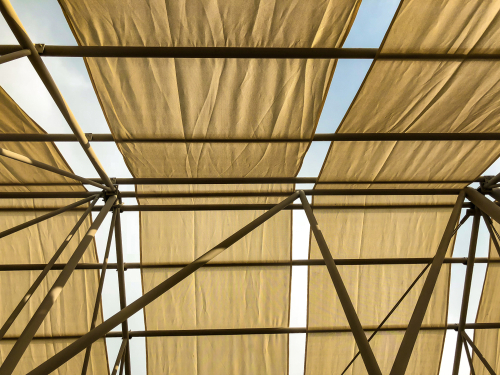The concept of fabric covered buildings. For hundreds of years, teepees and yurts were built around the idea of using lightweight and yet strong materials and stretching them across a framework. It’s not new. But it has been built upon in recent times, and their use has grown exponentially in the past few years. They’ve proven to be a popular choice for a variety of different reasons, but what do you need to know before getting involved in the process yourself? Here’s our quick guide to the installation of fabric covered buildings and canvas structures.

Today’s engineered fabric buildings reliably house industrial projects, athletic facilities, and entertainment centres, and offer a number of unique advantages over conventional steel and concrete buildings for both temporary and permanent installations. Their uses reach far and wide, giving a great deal of flexibility and a plethora of reasons to install them.
One benefit you should know about before installing fabric covered buildings is that they are very energy efficient. It costs nowhere near as much to heat them as it does with steel and concrete buildings. This is because the fabrics used are naturally non-conductive; they stay cool on warm days and stay warm and cold days, so it’s a lot cheaper to run them that it is to pay for heating in larger concrete buildings.
You should also consider whether or not you want your building to be portable or permanent. It all depends on what you’re using the building for, but they can be designed to be stationary or to be transported to different places for different uses. This is because the flexible fabric is easy to roll up and move to different locations. Moving the foundations may be a bit more tricky, but if you are building a fabric covered building you need to decide early whether you want to be able to move it in the future.
Most fabric structures which are used are also very sustainable and recyclable. A lot of the best materials can be in use for between 20 and 30 years, and even after they are run down they are still usually able to be recycled. This gives you a great reason to purchase them, as you know that while you’re getting a high quality building you’ll also be helping out the environment.
One example of a company who install fabric covered buildings is Absolutely Covered. Their website states that they “specialize in the sales and installation, maintenance and repair, and leasing and reconditioning of engineered fabric covered buildings and metal buildings for a wide range of building applications”. These include agriculture, car canopies, equestrian facilities and workshops. They claim to offer complete metal building systems to suit every need and budget, making them a good option if you’re looking to install a fabric covered building or structure.